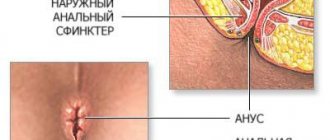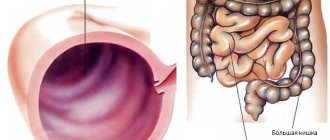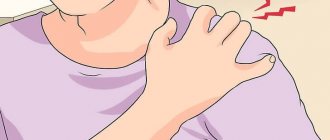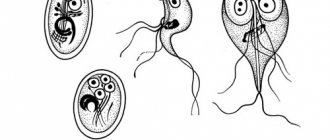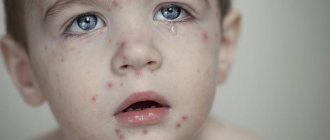Astigmatism is a fairly common visual impairment. According to WHO, a quarter of the world's population suffers from it. Often this type of ametropia is diagnosed in children, often accompanied by parallel myopia or hypermetropia. How can it be corrected in childhood? Read more in the article.
Our eyes are a unique optical mechanism consisting of several lenses. Light rays pass through them and focus on the desired points on the retina, creating a clear image. With astigmatism, the surface of the cornea is curved or the lens is deformed. As a result of incorrect refraction, when light passes through them, the rays are not focused properly, and a person sees blurry, smeared, and the image may be stretched horizontally or vertically. Why can such a pathology appear in a child?
Causes of astigmatism in children
Astigmatism can be congenital or acquired. This eye disease is diagnosed in 46% of preschoolers and primary schoolchildren with varying degrees of severity. It is curable, but it is important to make a diagnosis in time.
Acquired astigmatism can be due to several reasons:
- various eye injuries;
- subluxation of the lens;
- pathologies during the formation of teeth and jaws.
Congenital astigmatism is much more common. It should be noted that most children are born with a small degree of this disease (up to 0.5 D). A weak degree, which is called physiological, does not affect the quality of vision and the development of normal binocularity. For many children, this type of astigmatism goes away within the first five years of life.
It happens that a child is born with more severe degrees, which are already caused by genetic disorders: alcohol syndrome (due to the mother's drinking of alcohol during pregnancy), retinitis pigmentosa, albinism. Due to the development of the visual organs, the curvature of the cornea may change in the first year of life, which is also a favorable factor for the onset of the disease.
Description of the disease
Astigmatism refers to the pathology of refraction together with farsightedness and myopia, sometimes astigmatism is combined with one of these diseases. If, with myopia, a person has difficulty seeing objects far away from him, and with farsightedness, he does not clearly visualize nearby objects, then astigmatism is characterized by a distortion of the shape of the objects themselves.
A person sees distorted objects due to the deformed shape of the lens or corneal layer. Ideally, the cornea should have a spherical shape. Thanks to the correct structure of the corneal layer, light rays are focused on the retina of the eye, and a person sees clear outlines of objects. If the cornea takes on a convex or cone-shaped shape, then the focus shifts: the person sees distorted shapes.
Note! Congenital astigmatism is characteristic of both eyes; acquired astigmatism often affects only one visual organ.
Ophthalmologists diagnose a congenital form of astigmatism with a deviation of 1 diopter in almost every person. This is not a pathology, but is an absolute norm. However, deviations of more than one diopter already indicate pathology and are subject to correction.
The congenital form of astigmatism is characteristic of every newborn baby, and by the age of three it goes away on its own. If the refractive error worsens and deviates in the pathological direction, measures must be taken. The situation is complicated by the absence of pronounced symptoms at the stage of slight refractive error; the disease becomes noticeable only at the middle stage of its development.
What is the danger of astigmatism in children if it is not treated?
This pathology is more complex in nature than myopia or farsightedness. The child sees poorly both at close and long distances. It is difficult for him to accurately determine the distance to an object or between objects, and the sense of space changes.
If this eye disease is not corrected in time, it can further lead to strabismus, amblyopia, and in critical cases, blindness. In addition, astigmatism is often accompanied by headaches and discomfort in the eyes, causing discomfort to the child.
Complaints
A child cannot complain about poor vision because he does not know what good or normal vision is.
Parents should be alert to the following circumstances when the baby:
- cannot read signs on the street, cannot distinguish public transport route numbers, although he knows letters and numbers very well;
- when playing or reading, brings objects close to the eyes;
- describes an object as uneven or misshapen;
- When reading, he gets tired quickly, rubs his eyes, and complains of headaches.
Types of astigmatism in children
Depending on the severity, changes in refraction, location of the focus and some other factors, this eye disease is divided into the following types:
- corneal In this case, the surface of the cornea is curved. In this case, stronger degrees of astigmatism are diagnosed, since the cornea has a high refractive power;
- lenticular. Caused by deformation of the lens, it is less common than the corneal one. Usually it is congenital, inherited;
- hypermetropic - astigmatism combined with farsightedness;
- myopic - astigmatism is accompanied by myopia;
- mixed - myopic astigmatism is developed in one eye, and hypermetropic astigmatism in the other.
Also, this disease can develop in one eye (simple) or in both eyes (complex). In addition, it is classified according to the degree of severity: up to 3 diopters - weak, from 3 to 6 D - medium, over six - strong astigmatism.
Surgical techniques
Laser correction is the most effective method, but it can only be used upon reaching adulthood, when the structures of the visual organ have already been formed. Depending on the cause of astigmatism, the cornea or lens of the eye is subject to correction.
Laser vision correction belongs to the category of surgical operations, but it is quite simple to perform, although it is performed using high-tech medical equipment. The entire procedure takes on average about 15 minutes, after which the patient is sent home.
Using a special instrument - a microkeratome - the doctor separates the upper flap of the cornea, after which the desired part of the corneal layer is evaporated with a laser. Thus, its curvature is corrected, acquiring sphericity.
The next method, astigmatomy, involves applying arcuate incisions to the peripheral zones of the cornea. It also aims to correct the shape of the cornea, although it is considered a less alternative method.
Surgery on the lens to replace it with an artificial lens. It is used for abnormalities in the structure of the lens, an excessively thin cornea with a high degree of deformation.
How to recognize symptoms of astigmatism in children?
Parents should carefully monitor the development of the child’s visual organs and pay attention to the peculiarities of visual perception. He should be taken to the doctor immediately if the following symptoms are noticed:
- the child squints when looking at both long and short distances;
- complains of eye fatigue while reading or writing;
- has difficulty reading text, cannot identify some letters;
- tilts his head to the side in an attempt to get a better look at the object.
If such signs are present in children, you can also conduct a mini-test at home to check for astigmatism. To do this, experts advise doing the following. You need to take a sheet of paper with a clear graphic black and white design, then place it in front of the child’s face at arm’s length and ask him to close one eye. Next, check how well he sees all the lines or strokes (by pointing to them), find out if any of them seem lighter than the rest.
If the answers to the questions are affirmative, this may indicate the presence of astigmatism with some degree of probability. During the examination, the ophthalmologist will use instruments to identify the degree and type of this disease.
Diagnosis of childhood astigmatism
To determine the nature of the disorder, the same research methods are used as for adults. The most common method is autorefractometry. A beam of infrared light passes to the retina through the pupil and, reflected from the fundus of the eye, returns. The sensors record the parameters, and then the program compares them with the initial ones, thus determining the clinical refraction.
Using a keratometer, you can calculate the degree of curvature of the meridians of the outer surface of the eye. The method of computer keratotopography also makes it possible not only to determine the degree of deformation of the cornea, but also its thickness and shape (in complex cases). Ultrasound of the eyeballs, skiascopy and some other methods may also be prescribed. It is important to identify astigmatism at the earliest stages, as in children it often leads to strabismus and amblyopia.
Correction with astigmatic glasses
The most common and generally the only method of correction is up to the age of 9-10 years (starting from this age, contact lenses can become an alternative to glasses). To correct astigmatism, you need special lenses that have a complex design and are called cylindrical. They make it possible to correct the difference in refraction of the two main meridians of the eye. Their main feature is the axis, which has no optical effect. In the opposite direction from it there is a focus, due to which the lens has the same effect as a spherical one. Optics with cylindrical lenses are prescribed for refractive error in a separate meridian. If the astigmatism is mixed, then toric lenses are needed - a clearly calculated combination of cylindrical lenses with spherical ones. They refract the light flux along two meridians at once.
When wearing glasses to correct astigmatism, you need to visit a doctor at least once every six months so that he can check what changes have occurred in the eyes during this time and, if necessary, write out a different prescription for glasses, for example, with smaller diopters.
Conservative treatment
The method is cheap and easy to implement: after the examination, the doctor prescribes glasses for the child, which he must wear most of the time. However, it has certain disadvantages: even older children are very reluctant to agree to wear them. They restrict their movements, causing difficulties when playing sports and active recreation. There are limitations in lateral vision: the child sees well only in the frontal plane; when looking to the sides, up and down, there is no correction.
Attention! Do not try to choose glasses yourself, as this may worsen your child’s vision! Astigmatic glasses have a complex specific structure and are selected individually for each child!
The next method is using orthokeratolytic lenses. They are hard contact lenses that are worn at night to correct the shape of the cornea.
The method has limitations: it can be used in older children and is effective only for weak degrees of astigmatism.
Contact lenses
Starting at about 10 years of age, a child can already use toric contact lenses. Children often choose this type of correction. It is more convenient to engage in active recreation and play while wearing lenses, and this eliminates ridicule from peers, because many teenagers are embarrassed to wear glasses. It is important for parents to ensure that their child properly cares for optics and follows hygiene rules. It is best to choose daily lenses for the first wear.
Modern manufacturers produce toric lenses in a wide range. For example, the monthly replacement model SofLens 66 Toric from the manufacturer Bausch + Lomb has optimal characteristics. Also popular is the Air Optix for Astigmatism model from Alcon, which has the highest level of oxygen permeability of 138 units. These lenses provide eye comfort all day long.
Prevention of astigmatism
It is very important not only to treat astigmatism, but also to take measures to maintain good eye health from childhood. Here are a few rules every parent should follow. Don't skip mandatory eye exams. The doctor can notice vision problems in time and prescribe therapy. Make sure that your child does not spend too much time on the computer or with gadgets, but rather plays active, educational games more often. It is important to create a diet so that it includes foods that are good for vision, and periodically take courses of children's multivitamins. Avoid overstraining your child's eyes. The optical system begins to strengthen only at 7-8 years of age. Before this time, you should not burden your baby with reading and writing, and you should also ensure that he spends no more than 3-4 hours a day in front of the TV or with a tablet.
Unfortunately, this is the problem of our time - the excessive passion of children and teenagers for gadgets. Doctors note a very rapid increase in eye diseases under the age of 18.
Astigmatism in children is a disease that needs to be diagnosed in time and correction begun in order to prevent the development of other serious disorders. To do this, it is important to monitor the state of your child’s visual function and follow all doctor’s recommendations.


